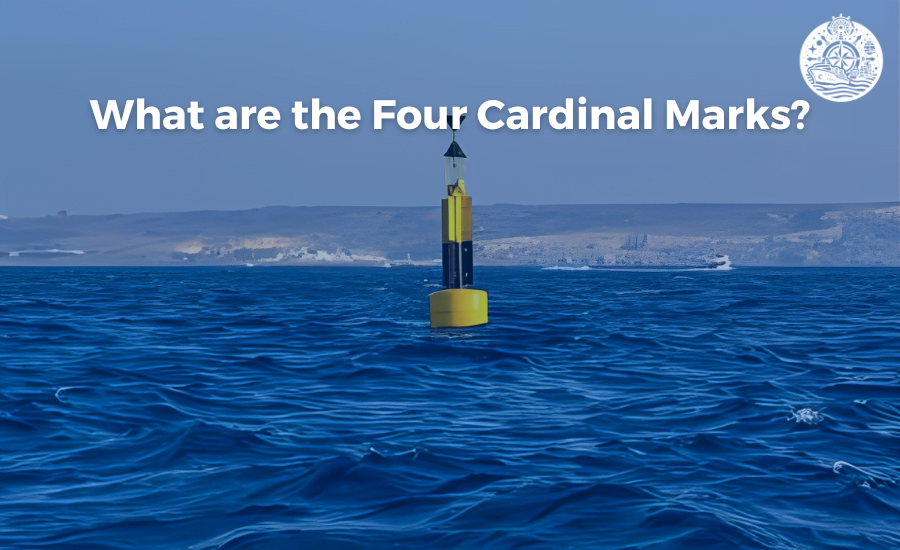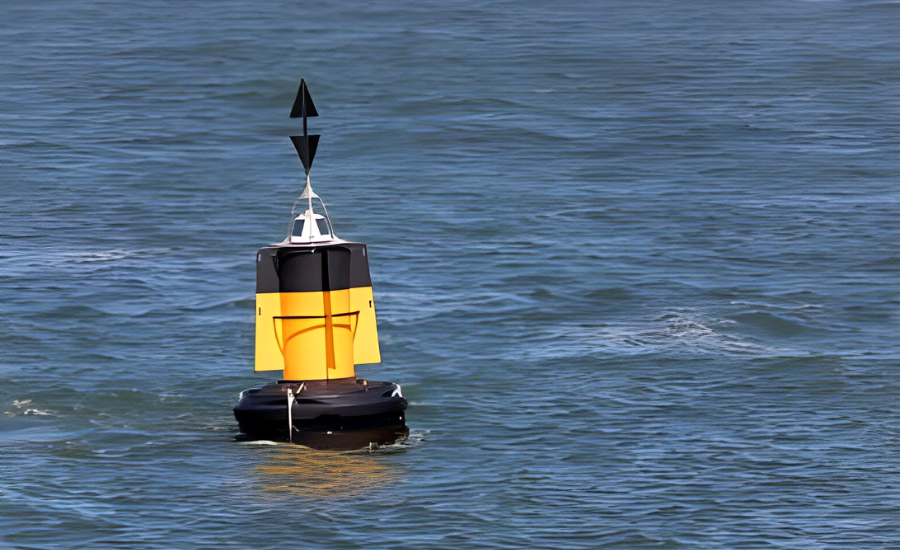
Navigating the vast open ocean is a complex task that requires a deep understanding of maritime tools and navigational aids. Among these tools, Cardinal marks directions are important guideposts and provide important information about the safest areas to navigate. This in-depth study delves into the concept of the Four Cardinal marks, revealing the complexity of their design, their Importance in maritime navigation, and the important role they play in the safety of ships at sea marks.
Nature of Cardinal Marks
Cardinal marks are a special category of navigational signs, each designed to convey important information regarding safe water direction relative to the mark. These Cardinal marks act as beacons, guiding sailors through waterways, away from danger, and toward the open sea.
Four Cardinals
North Cardinal (N)
The North Cardinal marks is characterized by its black color and has two conical shapes placed one above the other. The top cone points upwards, and the bottom cone points downwards. Sailors interpret this sign as an indication that there is safe water to the north.
Southern Cardinal Mark (S)
The Southern Cardinal marks is also black and has two cone shapes. However, in this case, the top cone points down, and the bottom cone points up. This indicates that there is safe water south of the marker.
Eastern Cardinal Mark (E)
The Eastern Cardinal marks is characterized by his two cones placed horizontally, forming a diamond shape. This sign indicates safe water to the east.
Western Cardinal Mark (W)
Similar to the Eastern Cardinal Mark, the Western Cardinal marks features two horizontally arranged cones forming a diamond shape. That means there is safe water in the west.
The Importance of Basic Directions in Navigation Clear
Direction Guidance:

Basic directions are intended to provide clear directional information. The placement of cones and shapes conveys a clear message regarding the safest direction of navigation for the vessel.
Hazard Avoidance
Each strategically placed basic mark indicates the presence of hazards such as rocks, shoals, shipwrecks, and other obstacles and serves as a warning to ships. Sailors use this information to plan their routes safely.
Independence from Compass Bearing
Unlike some navigation aids that rely on a compass bearing, a cardinal bearing provides information independent of the observer’s position. This feature increases reliability and makes it easier to interpret from any direction.
Night Visibility
To improve visibility when driving at night, the base point is equipped with special lighting characteristics. These lights help sailors see and interpret markings even in low-light conditions.
Cardinal Features Color Scheme
Cardinal marks follow a specific color scheme to maximize visibility. Common combinations include yellow and black horizontal stripes or black and yellow vertical stripes.
Top Mark
In addition to the cone or shape arrangement, cardinal marks often have a distinctive top mark. These tip markings help sailors identify the types of Cardinal marks they encounter.
Light Properties
Cardinal sea marks can have specific light properties such as B. A fixed number of flashes or continuous light. These light patterns make identification even easier, especially during night navigation.
Aligning the Top Mark
Aligning the top mark with respect to the compass direction provides additional information. For example, one upright cone can indicate the north or south direction, and two cones arranged in an “inverted V” can indicate the east or west direction.
Application and Interpretation of the Four Basic Signs Safe Route Planning

Strategic Route Planning
Cardinal sea marks bearings are an essential part of planning a safe route. Navigators strategically integrate information from these markers into chart headings to guide ships away from potential hazards. By understanding the bearing information sent from each direction of the compass, mariners can create routes that optimize safety, especially in difficult terrain or underwater hazards.
Interactive Mapping
Modern navigation systems integrate information about key points into electronic maps, allowing for interactive and dynamic route planning. Sailors can visualize the location of cardinal directions, assess their Importance compared to potential hazards, and adjust routes in real-time to ensure the safest navigation.
Dynamic Navigation
Adaptability to Changing Conditions
Cardinal marks allow seafarers to navigate and adjust course dynamically in response to changing conditions. Regardless of unexpected weather conditions, shifting currents, or changing sea conditions, navigators can rely on basic direction guidance to make informed and timely decisions throughout the journey.
Emergency Maneuvering
In emergency situations such as engine failure or sudden changes in weather, directional information from the base point is important. Seafarers can use this information to quickly assess alternative routes and avoid impending threats, contributing to overall ship safety and resilience.
Educational Importance
Nautical Education Foundation
Understanding the meaning of cardinal directions is the basis of navigational training for maritime professionals. Future sailors and navigators will complete training in interpreting fiducial features and acquire the knowledge necessary for safe navigation.
Practical Training Exercises
Navigation schools often include practical exercises in which students work through simulated base scenarios. These exercises provide hands-on experience in interpreting and applying the information conveyed by cardinal signs and foster a deep understanding of the cardinal’s role in real-world navigation.
Case Studies and Historical Context
Educational programs may include case studies and historical perspectives on incidents in which key points played an important role in accident prevention. Analyzing such cases increases students’ awareness of the practical and historical significance of these navigational aids.
Navigator Certification
Knowledge of cardinal bearing Interpretation is often a prerequisite for navigator certification. This training standard ensures that seafarers have the knowledge and skills necessary to navigate safely in a variety of marine environments.
Conclusion
In summary, the four cardinal marks serve as important navigational beacons guiding mariners through a complex network of waterways and open seas. Its special properties and clear directional information make it an invaluable element in shipping. The cardinal bearings encountered by ships as they navigate the world’s oceans are evidence of careful planning and consideration to ensure safety at sea. Day or night, these beacons provide reliable guideposts that guide ships away from potential danger and toward the vast horizons of safe, navigable oceans. As technology advances, the fundamental role of bearing remains the same, as it provides a timeless and important framework for safe maritime navigation.










